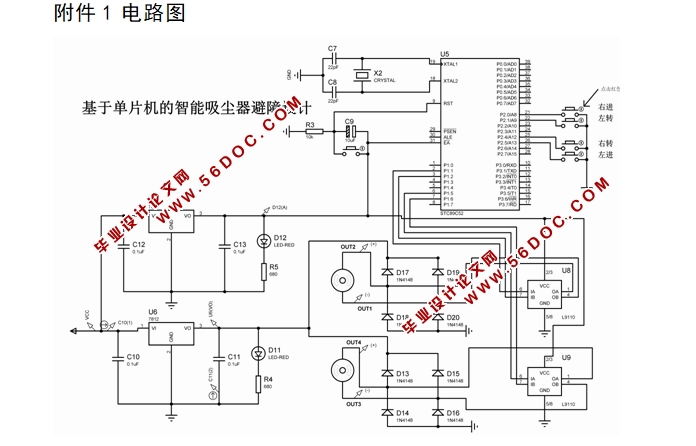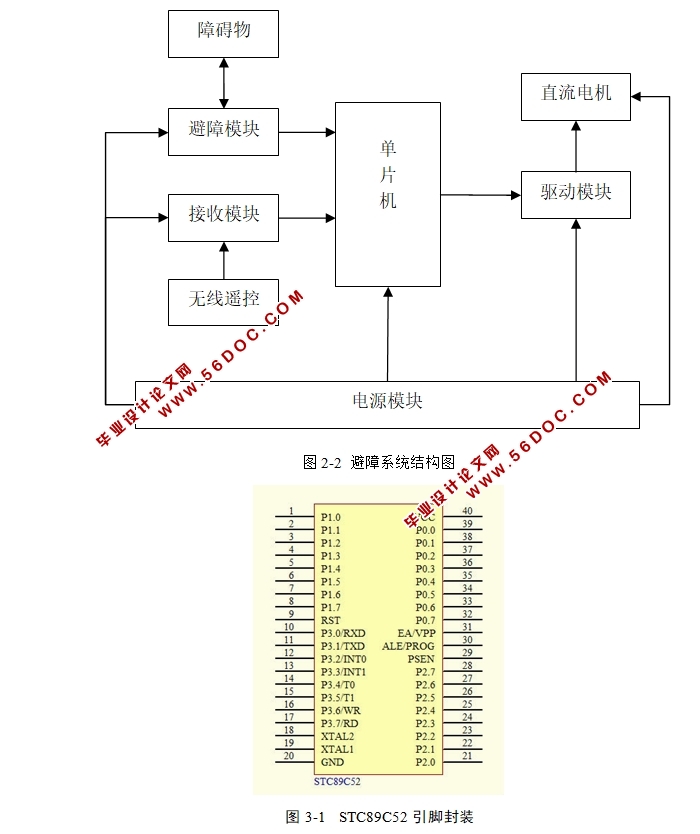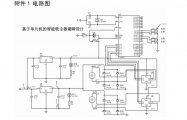基于单片机的智能吸尘器避障设计(附电路图)
来源:56doc.com 资料编号:5D19097 资料等级:★★★★★ %E8%B5%84%E6%96%99%E7%BC%96%E5%8F%B7%EF%BC%9A5D19097
资料以网页介绍的为准,下载后不会有水印.资料仅供学习参考之用. 密 保 惠 帮助
资料介绍
基于单片机的智能吸尘器避障设计(附电路图)(课题说明书,开题报告,中期检查表,论文11500字)
摘 要 本文主要讨论的主要问题是如何利用单片机来解决目前状态下的吸尘器的系统只能够进行自主的行动,而对于选择自主行动的路径还比较单一的这一问题。对此,设计的系统从智能避障与无线遥控功能两方面出发。通过设计的无线遥控功能对系统当前的状态进行切换,以此来实现其运动路径无法全覆盖的问题。对于本次系统采用的单片机型号为STC89C52,采用的智能避障器件为避障传感器型号为E18-D50NkK、用2272-M4非锁四路无线遥控模块构建了无线控制电路部分、L9110芯片用于电机驱动部分、电源部分用到了直流调理芯片LM7805,最后设计了整个系统的软件部分。当自主打扫不能完成所有的工作时,就可以用无线遥控人工控制完成所有的工作。它可以取代传统的家庭手动清洁方法,使家庭生活电气化,智能化,使技术更好地为人类服务。
关键词 单片机; 智能吸尘器避障; 无线遥控
The obstacle avoidance design of intelligent vacuum cleaner based on single chip microcomputer
Abstract This article mainly discussed the main problem is how to use single chip microcomputer to solve the current state of the vacuum cleaner can only system for independent action, and to choose the path of independent action is relatively single this problem, the design of the system from two aspects of intelligent obstacle avoidance and the wireless remote control function set off through the design of wireless remote control to switch the current state of the system, in order to realize the motion path can't cover all problems about the system USES single-chip computer models for STC89C52, using the intelligent obstacle avoidance device for grand obstacle avoidance sensor model for E18-D50NkK The wireless control circuit part L9110 chip is constructed with 2272-m4 non-locking four-way wireless remote control module, which is used for motor drive part and power supply part. The dc conditioning chip LM780 is used.
Keywords Single chip microcomputer; Smart vacuum cleaner to avoid obstacles; Wireless remote control


目录
摘要 1
1绪论 1
2智能吸尘器避障系统总体设计 2
2.1智能吸尘器避障系统简单介绍 2
2.2 系统方案选择 2
2.3智能吸尘器避障系统总体设计 6
3 智能吸尘器避障硬件电路设计 6
3.1单片机控制电路设计 6
3.2避障模块电路设计 9
3.3无线遥控模块 11
3.4电机驱动模块电路设计 14
3.5电源模块电路设计 16
3.6电机的驱动 17
4智能吸尘器避障软件系统设计 18
4.1 系统控制流程 18
4.2初始化子程序 19
4.3PWM调速子程序 21
4.4行进子程序 22
5结论 26
参考文献 27
致谢 29
附录 30
|





